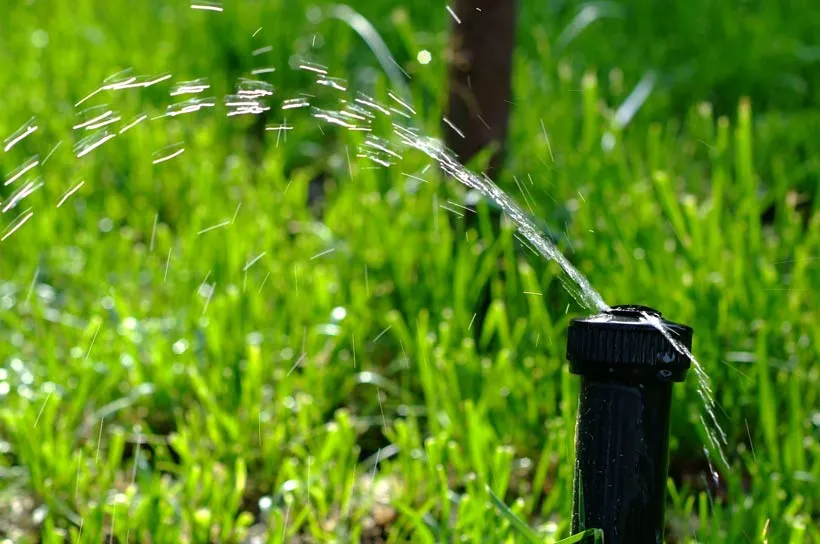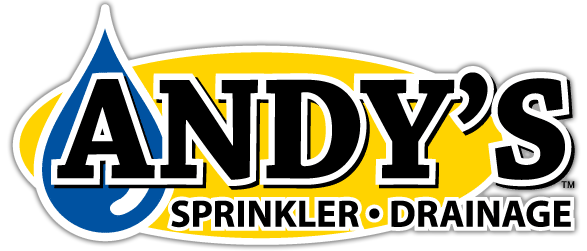
Common Causes of Low Sprinkler Water Pressure and How to Fix Them in Oklahoma City, OK
In Oklahoma City, OK, homeowners rely on their sprinkler systems to keep lawns healthy through hot summers and changing weather conditions. When water pressure is too low, sprinklers may not spray evenly, leaving some areas dry while others are oversaturated. This common issue can quickly waste water and reduce the effectiveness of your irrigation system.
Andy’s Sprinkler, Drainage, & Lighting proudly serves Oklahoma City residents while also offering professional sprinkler repair in Carrollton, Southlake, Austin, Lubbock, and Rockwall. Our licensed technicians have the expertise to find and fix pressure problems so your sprinkler system delivers reliable coverage year after year.
In this post, we’ll discuss some of the common reasons for low pressure sprinklers.
How Water Pressure Works in Sprinkler Systems
Water pressure is measured in PSI (pounds per square inch). Spray heads usually require 15–30 PSI to operate correctly, while rotor heads need around 30–50 PSI. Drip irrigation systems function at even lower levels, often 10–25 PSI.
In Oklahoma City, where summers are hot and rainfall is unpredictable, maintaining proper PSI is crucial. Too little pressure leads to patchy coverage, while too much can cause misting and wasted water. With Oklahoma’s clay-heavy soils, consistent and adequate water delivery helps prevent dry spots and stressed turf.
Table of Contents
Causes of Low Sprinkler Pressure
Troubleshooting Low Pressure
Fixes and Upgrades
Preventive Maintenance
Backflow Preventer Valve Issue
One of the leading reasons for low sprinkler water pressure relates to the valves on your backflow preventer device. If you notice limited water pressure in your sprinkler system but normal water pressure inside your home, then the problem might be that your backflow preventer valves are not completely open.
If this is the only issue, the fix is simple: access your backflow valves and open them completely to improve your water pressure. Most backflow preventer devices have two pipes: one that is horizontal and one that is vertical. Since there is typically a valve on both pipes, we’ll make sure that all valves are fully open.
The valves are open once they are parallel to the pipe. We make sure to make adjustments to the horizontal pipe first before moving onto the vertical pipe. To ensure that this is done correctly and that it is the only cause for concern with your sprinklers, it is best to have a professional handle this process.
Water Line Leak or Break
A much more concerning problem involves a break or leak in your water line. This issue is typically caused by digging too close to a water line, then accidentally breaking it.
In Oklahoma City, shifting clay soils can also crack pipes during dry periods followed by heavy rain. A sign that you have a broken line or leak is if you notice any depressions or abnormally wet areas on your lawn. Another sign is if you see water bubbling, which could indicate where the leak is located.
To ensure that the problem is detected and fixed properly, it’s highly recommended that you call the professionals at Andy’s Sprinkler to handle the whole process.
Shut-Off or Main Water Valves Aren’t Fully Open
Other valves you have to keep in mind include the shut-off valve and main water valve. Sprinkler systems typically have a shut-off valve that connects to your home’s water supply. To ensure adequate water pressure, be sure that this valve is opened all the way.
You’ll also want to keep in mind your main water valve, which is the valve that provides water for your entire home. To ensure proper water pressure, make sure that this valve is completely open as well. To help find these valves and ensure they are fully open, contact a professional for assistance.
Clogged or Dirty Sprinkler Heads
Sometimes sprinklers may indicate that there is a water pressure problem, but sometimes the issue lies within the sprinkler head. When sprinkler heads are clogged or dirty, then water is unable to flow properly through the system.
With Oklahoma City’s frequent dust storms and pollen buildup in spring, clogged heads are a common issue. If this is the culprit, you’ll typically notice some sprinkler heads that are flowing properly and others that aren’t. In this case, you’ll need to have the sprinkler heads thoroughly cleaned and inspected for other issues.
Water Line Obstruction
Another common culprit of low water pressure involves what’s happening underground. If you have trees and large shrubs in your yard or close by, then their rooting systems can easily infiltrate your water line.
In Oklahoma City, maple and oak trees are frequent sources of root intrusion that can block or damage irrigation lines. To find a solution to this problem, it is highly recommended that you call a reputable service provider.
Other Common Causes of Low Sprinkler Pressure
Beyond the main culprits, there are several other possible reasons why your sprinkler system may struggle with low pressure:
• Too many sprinkler heads per zone, which overloads the system.
• Undersized or aging pipes that cause friction loss.
• Drops in municipal water supply pressure during peak watering times.
• Zone valve malfunctions or faulty timer settings.
• Whole-home filtration or water softeners restricting flow.
How to Test for Low Water Pressure
If you’re unsure whether your system is suffering from low pressure, here are some quick DIY tests you can try before calling a professional:
• Attach a pressure gauge to an outdoor spigot and check PSI (15–30 PSI for sprays, 30–50 PSI for rotors).
• Monitor your water meter for movement when no water is being used, which may signal a hidden leak.
• Perform a simple “bucket test” by timing how long it takes to fill a gallon container—this reveals flow rate.
• Check sprinkler coverage and spacing against the manufacturer’s recommended ranges.
Fixes and Upgrades
Depending on the cause, solutions can range from quick DIY fixes to full system upgrades:
• Clean or replace clogged nozzles.
• Repair or patch small leaks.
• Reconfigure zones or split overloaded lines.
• Install a booster pump if Oklahoma City’s municipal supply runs low during peak demand.
• Upgrade undersized piping in older systems.
• Switch to water-efficient rotary or low-flow nozzles.
For more complex issues, Andy’s Sprinkler, Drainage & Lighting provides professional sprinkler repair throughout Oklahoma City and surrounding neighborhoods.
Preventive Maintenance Tips
To keep water pressure consistent and avoid major repairs:
• Flush the system seasonally to clear debris.
• Clean filters and sprinkler heads regularly.
• Inspect valves and lines for early signs of wear.
• Winterize your system before freezing Oklahoma temperatures.
• Consider installing a smart controller to optimize watering schedules.
Choose Andy’s Sprinkler, Drainage, & Lighting Today!
If you’re dealing with any of the issues outlined above, then it’s time to pick up the phone and call Andy’s Sprinkler, Drainage, & Lighting, find out which location offers sprinkler repair near you. We offer top-notch sprinkler system services and we can ensure your yard is ready to look its best! Contact us today to schedule an appointment.
FAQs
-
Why is my sprinkler system water pressure low?
Low pressure may be caused by clogged sprinkler heads, partially closed valves, leaks in water lines, municipal supply issues, or worn-out regulators.
-
How do I test my sprinkler system’s water pressure?
Attach a pressure gauge to an outdoor spigot. Spray heads work best at 20–30 PSI, while rotors typically need 30–60 PSI. If readings are below this, repairs may be needed.
-
Can clogged sprinkler heads cause low pressure?
Yes. Dirt, grass, or mineral buildup inside nozzles or filters can block water flow and lower pressure in specific zones. Cleaning or replacing heads often fixes the issue.
-
Should I try to fix low water pressure myself?
Homeowners can check valves, clean nozzles, and test pressure with a gauge. For underground leaks, valve problems, or repeated low pressure, it’s best to call a professional.
-
Can low water pressure damage my lawn?
Yes. Inconsistent coverage can leave some areas dry and stressed while others are oversaturated. Fixing pressure issues quickly helps maintain a healthy lawn.
Huntsville
273 Production Ave
Madison, AL 35758
